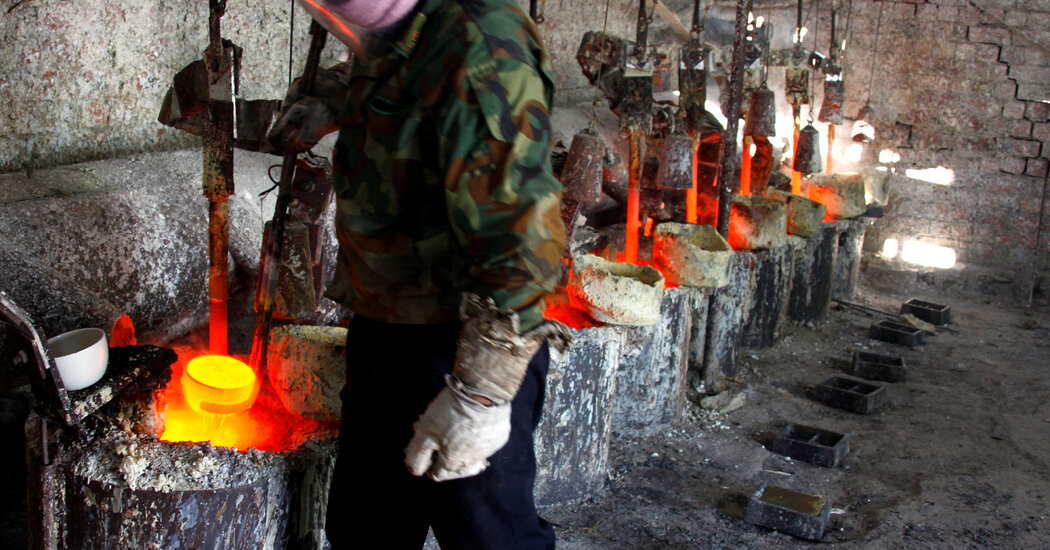What Are Rare Earth Metals, the Exports Halted by China?

[ad_1]
For years, the Chinese government has worked to control the export of rare earths, a group of metals used in an array of products, as common as semiconductors and lights. Now, in its trade war with the United States, China is moving to limit the market for these metals even further, which could have disastrous consequences for American manufacturing and military power. So, what exactly are these metals, and why are they so important?
What are rare earths?
There are 17 types of metals known as rare earths, which span the periodic table and are crucial to industries like technology, energy and transportation. With names like terbium, praseodymium and dysprosium, the metals are important ingredients for some of the most advanced technologies.
Rare earths can be sorted into two kinds: heavy and light. Heavy rare earths have a greater atomic weight and are typically more rare, meaning they sell in smaller quantities and are prone to shortages. Light metals, by contrast, have a lesser atomic weight. The two most important are neodymium and praseodymium, which are primarily used to create magnets.
What are they used for?
The uses for rare earths are expansive: semiconductor chips that power artificial intelligence; the motors of electric vehicles; fighter jets and guided missiles used by the U.S. military; wind turbines; and LED lights found in millions of households, among others.
Many rare earths have chemical properties that make them heat resistant, so they can be used to create high-quality magnets, glass, lights and batteries. Magnets made from rare earths are significantly more powerful — and valuable — than other types, especially in electric car production.
Does the United States produce rare earths?
The United States has just one operational rare earths mine, in Mountain Pass, Calif., which produces around 15 percent of global rare earths.
It wasn’t always this way. In the 1980s, the United States was a leader in rare earth production, accounting for around a third of the global market. But in tandem with a decades-long effort by China to take control of the market, the share of rare earth production in the United States slowly declined until it nearly ceased to exist in the early 2000s.
Where do rare earths come from?
Rare earths are mined from rock deposits in the earth’s crust. With nearly 70 percent of the market, China is able to control the export and price of the metals sold around the world. About 90 percent of rare earth magnets are produced in China, and 99.9 percent of the world’s dysprosium, which the chipmaker Nvidia uses to create capacitors, is mined in China.
In recent years, rare earths have become an increasingly important geopolitical tool. The Trump administration has sought to broker a deal to acquire mineral-rich Ukraine’s rare earths in exchange for military support. The administration has also talked about an outright takeover of Greenland, in part because of its rich rare earth supply.
What will the impact of China’s restrictions on rare earths be?
Without an adequate supply of rare earths, American manufacturing for sectors like the automotive industry would grind to a halt. Some American companies have been stockpiling rare earths for years in anticipation of a trade war, but it’s unclear how long those supplies would last if China cut off exports.
It could also affect the strategic goals of the U.S. military, which without rare earths could wind up with shortages of drones, missiles and aircraft. Tech manufacturers like Nvidia, whose chips are already in short supply, could also be affected, along with smartphone makers like Apple.
While many rare earth mining operations in China were for years private or even foreign-owned, the Chinese government has consolidated control over the industry by acquiring the largest local miners with state-owned companies, giving it total control over manufacturing and exporting.
[ad_2]
Source link




